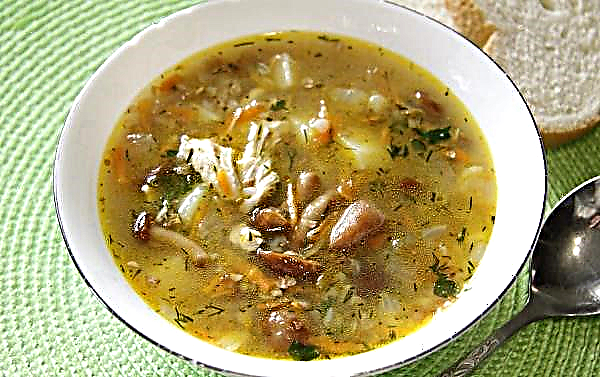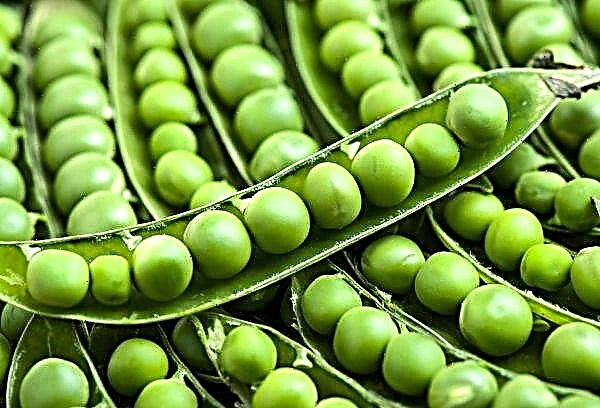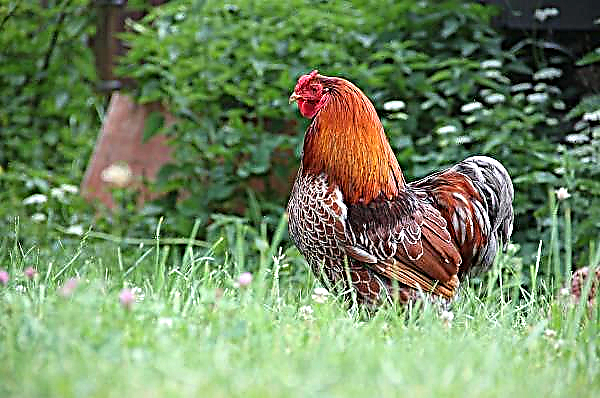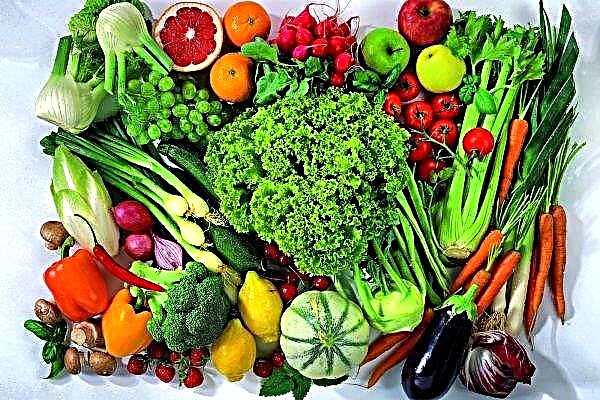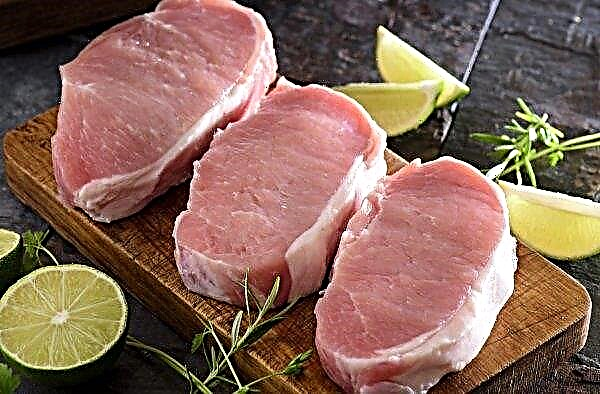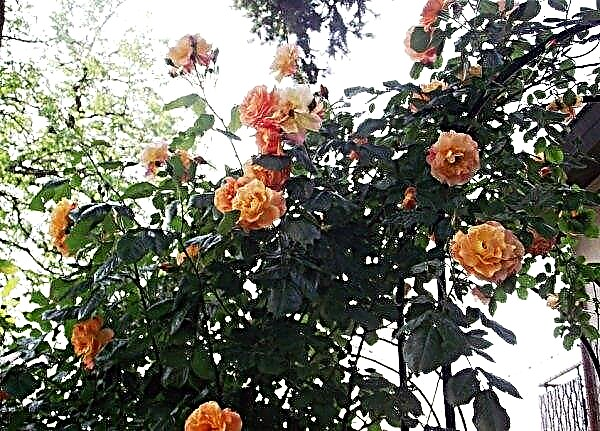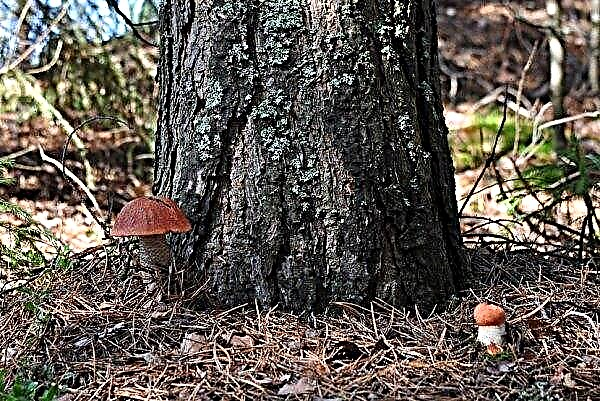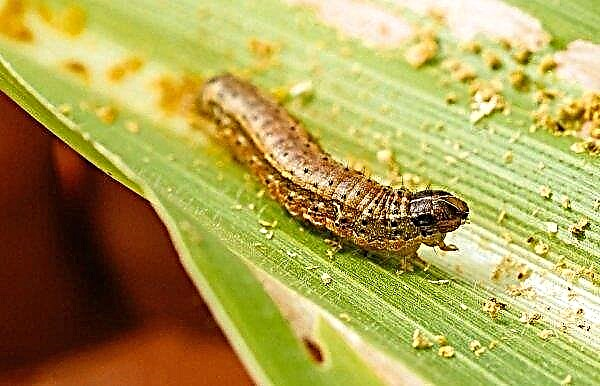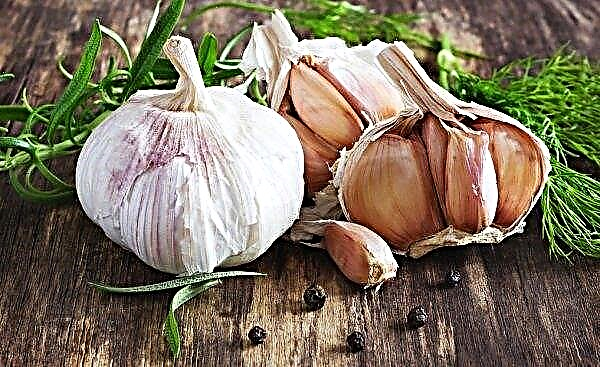Potatoes are grown in almost every area, because without it it is difficult to imagine a daily diet. In the article, we consider a potato variety called Karatop, its pros and cons, as well as the main nuances of caring for it.
Characterization and description of the variety

Karatop belongs to the early varieties of potatoes, is characterized by high productivity. This variety was bred by German breeders and added to the register of the Russian Federation in the late 90s. XX century.
The tubers have a light yellow color, a smooth surface with shallow eyes, oval or round shape.
The bush is medium-tall with white flowers. The fruits are well stored and transported, while the presentation is practically not lost.
Karatop is a versatile vegetable, as it is good for both industrial and home use. Its high palatability is noted.
On a five-point scale, this root crop is estimated at 4.7. The Karatop variety is suitable for planting not only in open ground, but also under the film. It is precocious: the first crop can be harvested as early as 45 days after planting.
Pros and cons of the variety
- This variety has gained popularity due to the large number of advantages:
- high productivity;
- unpretentiousness to soil;
- universality;
- disease resistance;
- good presentation.
Did you know? The most expensive potato in the world — La Bonnotte, which is grown on the island of Noirmoutier. She is very tender and delicious. The cost of 1 kg of such potatoes is about 500 euros.
- Among the shortcomings can be noted such:
- does not tolerate drought (requires abundant watering);
- has low resistance to late blight.
How to plant potatoes
This type of potato does not have special requirements for planting. However, it is recommended to prepare the soil for it in advance. It is advisable to dig the earth in the fall and make compost, wood ash and superphosphate in the process.
Crop rotation rules
Siderats are good precursors for potatoes: peas, beans, mustard, oats, barley, etc. Such plants enrich the soil with useful chemical elements, improve soil structure, and also inhibit the growth of weeds.
It is impossible that before planting potatoes in the same area solanaceous plants had previously grown: peppers, eggplant, tomatoes. This increases the likelihood of diseases characteristic of solanaceous, especially late blight, to which this variety of potato is extremely unstable.
After harvesting, the balance of the soil should be restored by seeding with green manure and the introduction of complex fertilizers.
Important! Next year, it is not recommended to plant potatoes in the same place again.
Landing time
Usually, landing begins in mid-April. But it is worth considering that the earth should warm up to a depth of 10 cm. This variety can be used for planting under the film. Then the landing can begin in mid-March.
Soil requirements
This potato is undemanding to the soil. An exception is soil with a granulometric composition, i.e., with the content of particles of different sizes in the soil, which may affect fertility. In this case, you need to provide additional nutrition and care for the crop.
Preparing planting material
In order to achieve a quick ripening of the crop, as well as to obtain stronger plants, it is recommended to germinate planting material in advance. It is worth choosing medium-sized tubers with a large number of eyes, from which later many shoots will turn out. Tubers should be taken dense, with a clean smooth surface, which indicates the absence of diseases.
Direct germination occurs as follows:
- Damp earth is covered with a small layer in the tank, the temperature of which should not be lower than + 15 ° С.
- Then lay the tubers with the eyes up. Top again fill the ground (2-3 cm).
- After that, you can lay out the next layer of potatoes. It is important that the tank has no more than 3 layers of tubers.
- For better germination, you can use copper sulfate in a proportion of 1 g per 5 liters of water, with a solution of which the planted tubers are watered.
- The container is placed in the light and germinated for about 2 weeks. All sprouted tubers are planted, the rest can be continued to germinate.
Landing technology
To land you need to dig a trench. On light soils, its depth should be up to 10 cm, in heavy soils - up to 8 cm, for clay soils - up to 5 cm.The distance between the rows should be at least 60 cm. The tubers are laid out in a depression 35 cm from each other and sprinkled with earth. You can pre-fill humus or ash on the bottom of the trench as an additional top dressing.
If the planting is organized under a film, then before planting, in addition to the usual cultivation procedure, you need to keep the tubers in a box with peat for a week. Sprouted potatoes are ready for planting, if it has shoots 2-3 cm long.Did you know? Homeland of potatoes — South America. Wild potatoes still grow there.
Features of growing and caring for potatoes after planting
With insufficient watering, this variety significantly loses in yield. It should be watered at least 2 times a week. Irrigation is recommended in the morning, while making sure that water does not get on the leaves, which can lead to sunburn. It is better to organize drip irrigation. With excessive moisture, the risk of late blight increases.
At the beginning of growth and before the flowering period, this culture requires phosphorus. When flowers appear, the need for potassium increases. Accordingly, you will need to make fertilizers with these substances in the composition. It is best to do top dressing with watering at intervals of 1–2 weeks.
In addition, between the beds you need to constantly loosen the soil. The first loosening should be done within 5 days after planting. In the future, as the topsoil dries up. This is done to saturate the soil with oxygen and preserve moisture. In addition, you will need to periodically weed the beds with potatoes to remove weeds.
Diseases and pests
The variety Karatop has high resistance to glandular spotting, verticillosis, nematode, scab, and potato cancer. But it is sensitive to late blight, so in order to prevent it, you need to treat the bushes during the appearance of buds with fungicidal preparations that destroy the fungus ("Ridomil", "Skor").
If this disease is detected, plants can be sprayed with copper sulfate at the rate of 1 g per 1 liter of water, and all affected bushes should be destroyed to prevent further spread of the disease.
The most common pests of potatoes are the Colorado potato beetle and wireworm. To prevent the appearance of wireworms when digging the earth, ammonium sulfate is introduced.
Important! In the fight against the Colorado potato beetle, drugs showed themselves well «Fastak», «Spark». The effect of their use will be noticeable in a few days.
Harvest dates and storage
Harvesting Karatop can be done several times a season. The first collection, as a rule, begins in the interval from 45 to 60 days from the moment of planting. Productivity depends on the region, on average, the first harvest can be 35 t / ha, and with further harvest - 50 t / ha.
The storage room should be dry, cool and dark. Before you leave the potatoes in storage, vegetables must be carefully sorted and dried.
Karatop variety has many advantages, among which early maturation, unpretentiousness and high productivity can be called. Those who grow it on their sites, note its excellent taste, as well as the fact that it is suitable for cooking different dishes.


